A few weeks ago, I wrote a post about a series of pistols designed by a German inventor named Claus Claudius, which began with a long-recoil design in 1895. He then progressed to a floating chamber design in 1900, and finally a fairly conventional short-recoil design in 1905. We found a book with photos of the 1895 version, but it was claimed that the 1900 was never actually built, and we had no information on the 1905 beyond its patents.
Well, a fellow named Christian in Finland sent us some photos of what appears to be a prototype of the 1905 Clausius design – it’s certainly too close to the patent drawings to be a coincidence.
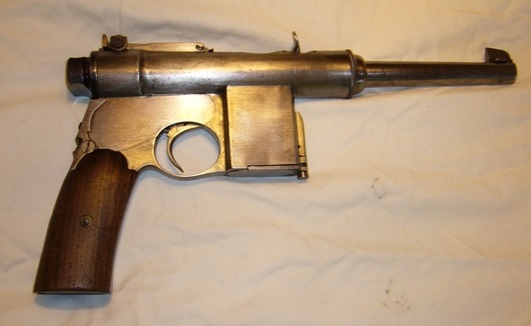
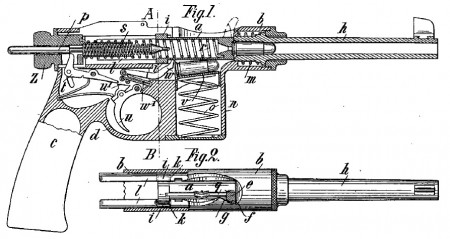
As Christian explains, the pistol belongs to an elderly Swedish gentleman who received it as a gift from a Swedish army officer in the 1960s. That officer apparently bought it in Germany at some point and brought it back to Sweden in 1932. That time frame and geography would fit with it being a Clausius gun. However, there are some details of the gun that bring up questions. For example, the magazine floorplate is held in placed by a protruding screw, and the hole for that screw was drilled much too close to the edge of the magazine well, resulting in it nearly breaking through when threaded:
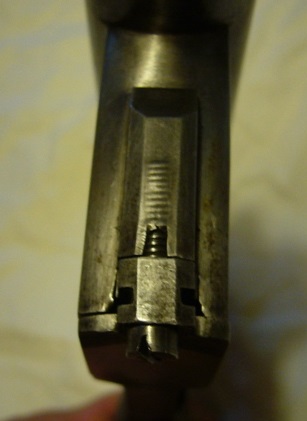
That sort of thing is not what you would expect from a competent gunmaker (or machinist of any specialty, for that matter). In addition, the pistol is completely devoid of any markings, including proof marks. That pretty effectively guarantees that it was not a commercial gun, which leaves the possibilities of a home shop one-off (perhaps a proof of concept?) or a factory prototype.
More photos of the pistol:
Perhaps Clausius build this prototype himself as a proof of concept sample, or hired out its construction to a not-really-great machine shop he had some connection to? Perhaps he was trying to sell the patent to a more significant arms factory? Perhaps Clausius had a son or friend who decided to build one of the guns and had access to the plans? Unfortunately, I doubt we will ever know.

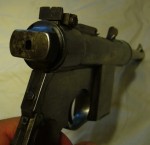

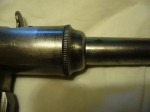

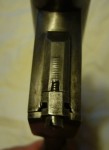

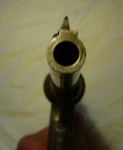
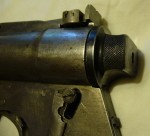

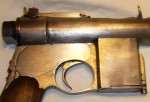

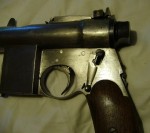
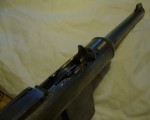
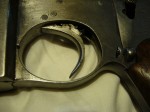

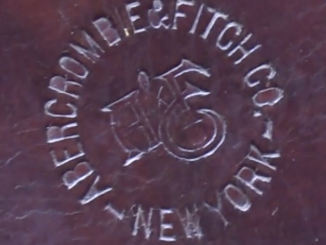
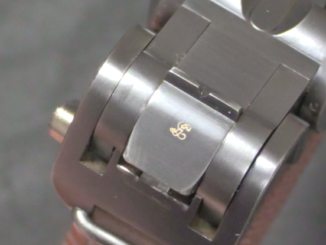
Yes, the first thing I thought when I saw the photo was that it looked like a shop project. I wonder whether it was a project by Claudius, or one simply based on Claudius’ design.
* Clausius
If this was a shop project, could it be that it is literally the only one of its kind in existence?
Thanks Admin for posting these additional pics! I’ll try to get pics of the individual parts after dismantling the pistol, but that will most likely have to wait for a few weeks more.
I’ve corresponded with collectors I know and some that are friends of friends etc. After looking at the pictures several have, as stated above, noticed that the screw holding the magazine bottom stands out like a sore thumb from the level of craftmanship in the rest of the pistol. One ventured the guess that the screw is of a later date, he noticed that the original thread doesn’t seem to match the thread on the screw. I.e. somebody, sometime, forced that screw into a hole it doesn’t quite fit.
Other theories/educated guesses discussed are:
1. A prototype or tool room build. But as there are no proof stamps or other markings it has never advanced to be something shown to a potential customer. One German collector pointed out that this construction was already quite outdated in 1905, so it might just be an abandoned project. If this is the case, there will likely never be a way of proving this, however… which is sad.
2. A gunsmiths apprentice project. I.e. something the apprentice had to build to prove his craftmanship. What speaks against this is that no machinist drawings are known, building this from merely the patent drawings would not have been a feasible project.
3. The work of an advanced hobbyist. See above.
Several would like to see the inner workings of the pistol as these might give additional clues. Reused parts or possibly something differing from the patent drawings? I will try to get these pics.
As things are now, it’s an interesting piece of work in an old mans gun cabinet. The sad fact is that without numbers, proofs, identity or history it is more or less unsellable under present laws. The likely fate of this pistol is to be confiscated by the government after the present octogenerian owners death and melted down. But it has been an interesting quest trying to track down what it is.
Christian and Ian,
Thanks for sharing such an interesting pistol.
I didn’t pay much attention to the first Clausius post – more fool me!
There in the 1900 patent is a “Williams” floating chamber, the patent application was submitted 3 months before David Marshall Williams was born.
and looking at the patent drawings for the 1905, it appears to be a delayed blowback but using the floating barrel system which was later patented by Kimball in the mid 1950s
I await Christian’s photos of its innards – or a British patent before confirming on that, but it looks like an extremely interesting pistol, and despite its outdated appearance, its operating system looks like it could have been half a century before its time.
there’s likely to be a British 1905 patent, as Britain in typically mercantilist fashion, insisted on inventions being patented in Britain first, if a “foreign” patent was applied for first, the London patent office refused to issue a British one.
Perhaps, like the Landstad auto revolver, the British patent is in another name?
Just to add, As Chritian is in Finland
I gather that the late 1960s experiments (Tikka or Valmet) with the 9mm Lilja Intermediate round, used Suomi SMGs modified to allow the barrel to move back (as in the Kimball patent) as the test bed
The French patent for the 1905 Clausius is cited as a reference for Harry Sanford’s 1973 patent for the “Automag” http://worldwide.espacenet.com/publicationDetails/originalDocument?CC=US&NR=3780618A&KC=A&FT=D&ND=4&date=19731225&DB=EPODOC&locale=en_EP
It looks like the original hole was drilled and tapped to a larger size later in life, maybe by someone who just wanted a shooter. May have stripped the original screw-hole, or maybe the floor plate was originally held in with a detent that did not hold together? The screw looks clunky on an otherwise graceful design.
Once saw a nice GI bring-back Mannlicher carbine that someone “fixed”. Desiring a new front sight, he first drilled and tapped INTO the bore. The front sight was never seen again after the first shot. Then he took a jagged bit of sheet metal and arc welded (not TIG, not silver solder, good old farm AC welder with a 6011 rod or whatever) it to the top of the muzzle for a sight. A nice ugly weld with lots of porosity. Makes me sick to this day. If he had got ahold of that pistol, it would be lucky to only have that screw-hole mutilated.
Regarding the pistol, it is a coincidence, but it bears a strong outward resemblance to the 1980’s Charter Arms Explorer II (a 22 pistol that used an AR-7 action).
Don’t forget that Mannlichers saw two world wars, I have seen some Yugo partisan repairs, they range from “how the fuck did they make absolutely identical part with better then original quality” to “What, no front sight? Weld this nail there and carry on”. No kidding on the last, actually seen it. I have seen Stens with all sort of homemade wooden stocks, from works of art to broom handle leftovers. Then a sten with folding stock from MP-40, done so well that you would think it is original one. And another with piece of bent steel rod.
Guerrilla warfare s a nasty business and people improvise a lot. Lucky ones have at least half-competent gunsmith, most live with own wits.
Exactly, and well said. The exigencies of war often demand improvisations using very limited means and resources at one’s disposal under the shadow of major constraints and pressures.
I know a couple of Serbs, I’ll have to ask them whether “Bubba” is a Slavic name too
Bubba transcends all languages and cultures and no gun is safe from his misguided enthusiasm!
This is what car folks call “a car in a barn”… I hope it can be saved from the bureaucrats, at very least, “in a museum”.